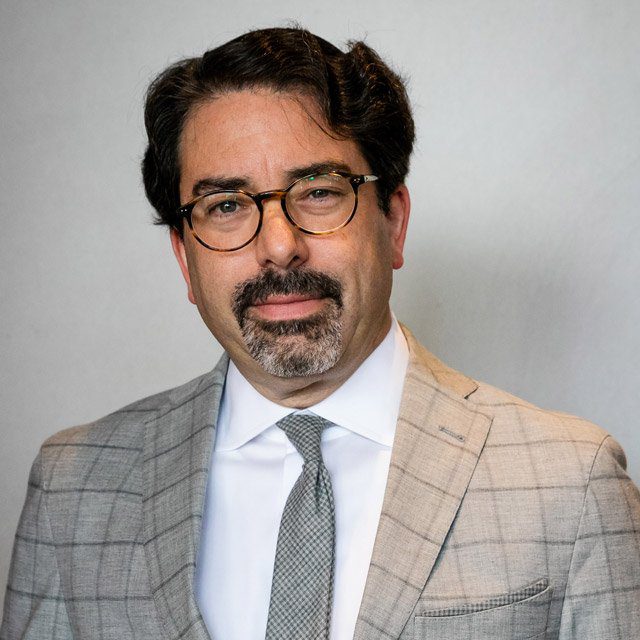Moshe Milevsky to Debut a Tontine for 21st Century Retirement Portfolios

Moshe Milevsky, finance professor at York University in Toronto and consultant to financial industry companies, has teamed up with a firm to soon introduce a new product category for retirement decumulation that, he says, generates a higher rate of return.
It’s a tontine — but not a traditional tontine, essentially a group annuity whose payouts to survivors increase upon the death of each participant.
This modern 21st century tontine is structured as “a garden-variety mutual fund, which you can purchase but never exit. You get payments for the rest of your life,” Milevsky said in an interview with ThinkAdvisor.
At press time, the name of the issuing firm was under embargo, and the company has yet to make its official announcement.
Key to the new tontine’s intended appeal is the capability to share risk among the investors. It uses the concept of longevity risk pooling, in which a group of people in a particular age group invest in the tontine fund.
This “enhances the investment rate of return by harvesting mortality credits from those investors who predecease them,” Milevsky explains in his new book, “How to Build a Modern Tontine: Algorithms, Scripts and Tips” (Springer-June 8).
The professor and his partner firm’s tontine differs chiefly from the traditional centuries-old version, sold as an insurance contract, in that it’s structured as a financial security with no lifetime guarantee and that it will be sold by advisors.
The tontine was invented by the Portuguese in 1692 and became highly popular in Europe during the 17th and 18th centuries, according to Milevsky.
The professor, who earlier wrote “King William’s Tontine: Why the Retirement Annuity of the Future Should Resemble Its Past” (2015), has for years pondered the tontine concept as a way to expand the range of retirement income planning products.
At York University, he is a member of the graduate faculty of mathematics and statistics.
He is also a consultant to numerous financial firms, especially insurance companies. His clients include Guardian Capital Group, for whom he is chief retirement architect, and research firm PiLECo, where he is managing director.
ThinkAdvisor recently held a phone interview with Milevsky, who was speaking from Toronto.
“A number of companies have something similar to [our modern tontine]”; but they don’t call it a tontine because the name tested poorly, he notes.
“That defeats the purpose. Call it what it is. So we’ll be using ‘tontine’,” he says.
But not in the South American market because, the professor notes, “in Spanish, ‘tontine’ means ‘idiot.’” They’ll be introducing the category with a different name there.
Here are excerpts from our conversation:
THINKADVISOR: You write that a tontine will make retirement and decumulation easier. How so?
MOSHE MILEVSKY: You’ll be able to extract more yield from your existing investments. A couple of hundred basis points make a big difference, especially in inflationary times.
The impression many have is that a group of people who know one another invest in a tontine, and the last survivor gets all the money. Is that so with the modern tontine?
Absolutely not. That’s the Homer Simpson version [in which a tontine is formed to inherit paintings during a “Simpsons” episode].
This isn’t the last man standing: It’s not an Agatha Christie mystery. This is an ongoing process of giving people money.
How will the modern tontine be structured?
As a garden-variety mutual fund, which you purchase but can never exit. You get payments for the rest of your life.
”Never exit” is anxiety-producing. Won’t that be a turn-off to clients?
Why in the world would someone be willing to buy a mutual fund that they can never exit or exit? Because the extra return that they’re going to get by not allowing other people to leave is worth it.
There’s some liquidity, but you can’t get the whole thing out. There are certain versions where you can get 50% or 30%. If you get all [your money] out, it defeats the purpose.
Can the investor get cash flow right away?
Yes. Or they can reinvest it. They get returns monthly, like a dividend check. When someone [another investor in the tontine] dies, the money goes into the pool.
Please explain that.
If a bunch of people who are of common biological age pool their resources in a tontine and agree never to leave, when they die, the money gets redistributed to the pool.
Mortality credits are the money that’s left over when someone dies — and their beneficiaries can’t take it out. It’s not like a life insurance policy,
This is about pooling risk for higher return — longevity-risk pooling and harvesting mortality credits.
For example, let’s say the market is down 10%. If somebody dies, their money goes into the pool, and the pool grows by 3%.
But we’re not saying you don’t have to save anymore because you’ve got a tontine. This is for people that [figure]: “I can participate in a tontine and get an extra 250 basis points. Okay, sign me up.”
What are the main differences between a modern 21st century tontine and a traditional 18th century tontine?
Number one; the historical tontine was quite similar to the winner-takes-all-in-30 years [concept]. The modern tontine is not that.
Number two; the historical tontine was a debt instrument, where governments borrowed money using it. Nobody is borrowing money here. It’s not leveraged. People are investing their money.
The historical tontine tended to be very clunky in terms of how you confirm that people are alive. There was a lot of fraud.






